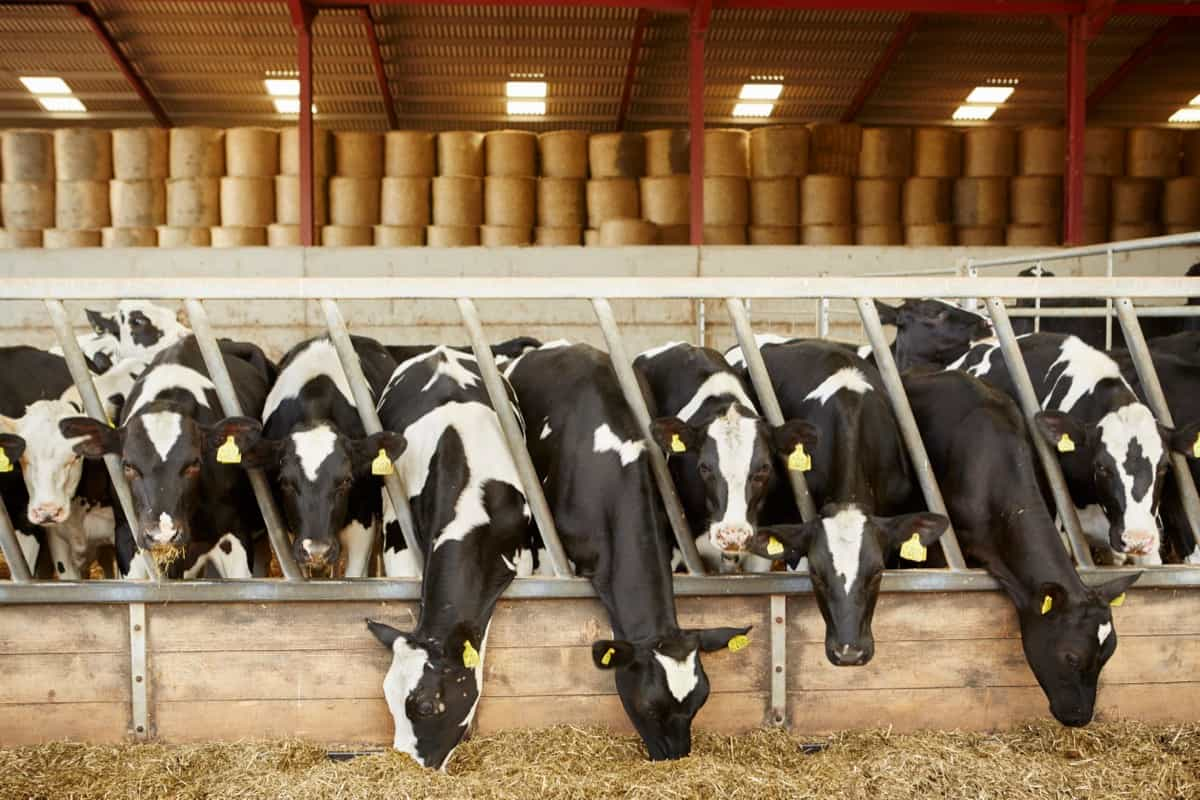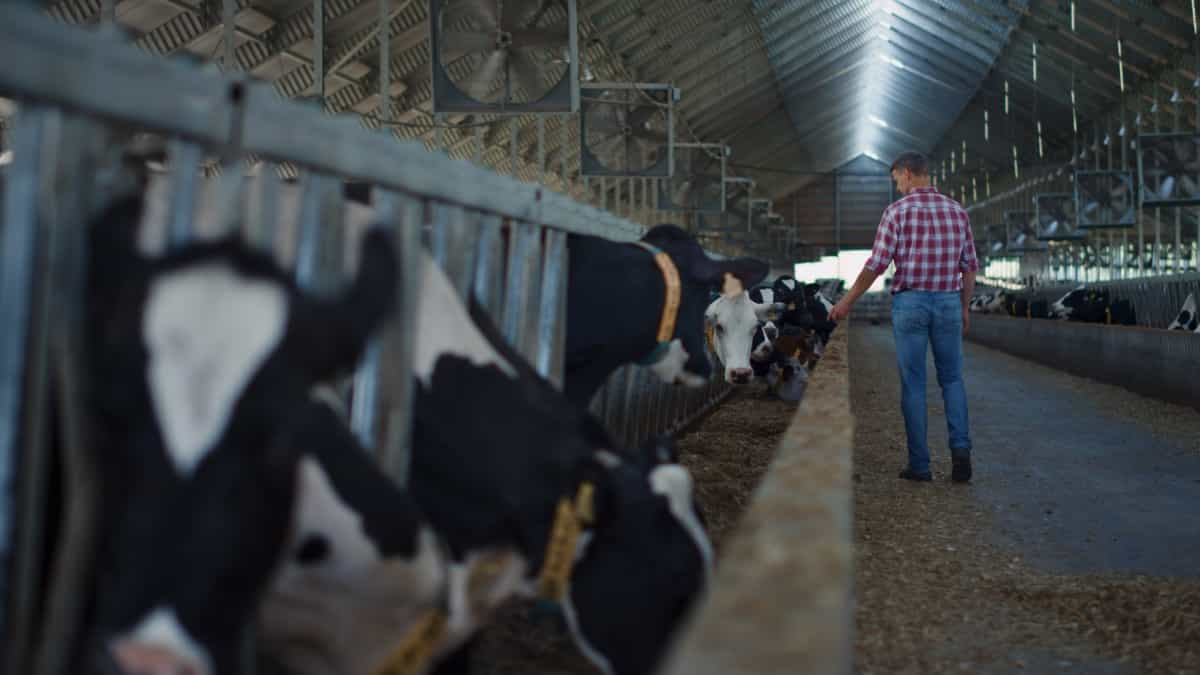Cattle farming is an age-old tradition that has evolved significantly over the centuries, propelled by technological advances, farming techniques, and animal welfare understanding. As an enterprise, it can be rewarding, lucrative, and a tangible connection to the natural world’s rhythm. However, it also comes with its unique challenges.

The biggest problem with cattle farming is often the smallest mistakes that can be inadvertently made, significantly impacting productivity and profitability. Understanding these potential pitfalls is crucial, and it’s the first step toward creating a robust, thriving cattle farm. This article will explore the ten most common mistakes in cattle farming, offering insight into their problems and the solutions needed to avoid them.
Top 10 Common Mistakes to Avoid in Cattle Farming
Improper Pasture Management and Grazing Practices
Pasture management and grazing practices are one of the most significant challenges in cattle farming. Often, cattle farmers underestimate the importance of strategic grazing, resulting in overgrazing, underutilization, or degradation of the pastures. Overgrazing can lead to soil erosion, degradation of water quality, and decreased pasture productivity, limiting the available feed for the cattle. Conversely, underutilized pastures may become overgrown, encouraging the proliferation of undesirable plant species.
Proper pasture management involves balancing allowing the cattle to graze and giving the land enough time to recover. Utilizing a rotational grazing system can optimize pasture usage, allowing each section of pasture to rejuvenate between grazing periods. This approach encourages the growth of desirable grasses, reduces soil erosion, and maximizes the nutritional intake for the cattle, contributing to their overall health and productivity.
Neglecting Proper Herd Health and Vaccination Protocols
Another common mistake in cattle farming is neglecting proper herd health and vaccination protocols. Health issues in cattle affect individual animals and can quickly spread through the herd, leading to significant productivity losses and costly treatments. Regular health checks and a well-planned vaccination schedule are crucial to ensuring a healthy herd.
Vaccinations are pivotal in preventing common diseases, reducing the risk of outbreaks, and minimizing the need for antibiotics. A well-maintained vaccination schedule, alongside routine health checks, helps to identify potential health issues early, allowing for timely treatment and reducing the chances of widespread disease transmission.
Inadequate Feeding and Nutrition Planning
Cattle farmers often underestimate the importance of adequate feeding and nutrition planning. The nutritional needs of cattle vary depending on age, gender, breed, stage of life (calving, growing, finishing), and overall health status. Failing to meet these specific needs can lead to nutritional deficiencies or imbalances, impairing growth, reducing milk production, compromising reproductive performance, and leading to health problems.
Cattle farmers should regularly evaluate and adjust their feeding plans to meet their cattle’s nutritional needs. This requires a balance of high-quality forage, grains, minerals, and vitamins to ensure optimal health, growth, and productivity.
Lack of Sufficient Water Supply and Hydration Management
Water is a crucial yet often overlooked element in cattle farming. The absence of a sufficient and consistent water supply can lead to dehydration, affecting cattle health and productivity. Cattle require clean, fresh water for drinking, particularly in hot weather conditions, when their water needs increase.
In case you missed it: Feeding Corn to Cattle: A Step-By-Step Guide

Moreover, inadequate hydration can impact digestion and nutrient absorption, leading to weight loss and decreased milk production. Installing automatic watering systems and regularly checking water sources for cleanliness can ensure that cattle have continual access to clean water, improving their overall health and productivity.
Failure to Address Parasite Control and Deworming
Parasites pose a significant threat to cattle health, growth, and productivity. Despite this, some farmers neglect to implement effective parasite control and deworming programs, which can result in infestations that compromise the herd’s health and well-being.
Regular deworming, alongside strategic pasture management, can significantly reduce the risk of parasitic infections. However, it’s important to remember that not all deworming products are equally effective against all parasites. Therefore, it is recommended to use various deworming products throughout the year to maximize effectiveness.
Inadequate Shelter and Protection From Extreme Weather Conditions
Protecting cattle from extreme weather conditions is another aspect of cattle farming that can sometimes be overlooked. Cattle can tolerate a wide range of temperatures but are susceptible to heat stress, cold stress, and adverse weather events such as storms or heavy snowfall.
Providing adequate shelter can protect them from these conditions, preserving their health and productivity. The shelter can take the form of natural features like trees and hills or man-made structures such as barns and windbreaks. Regardless of its form, the shelter must provide adequate space for all cattle, ensuring they can all access it when required.
Ignoring Signs of Illness and Delaying Veterinary Care
Early identification and timely treatment of diseases can greatly impact the well-being and output of a cattle farm. Ignoring signs of illness or delaying veterinary care can lead to serious complications, including the spread of diseases, costly treatments, and even death.
It’s important for cattle farmers to be knowledgeable about the common signs of illness in cattle and to have a working relationship with a reputable veterinary practice. Regular health checks and immediate response to noticeable changes in behavior, eating habits, or physical condition can help ensure that illnesses are caught and treated promptly.
Overlooking Proper Calving Management and Assistance
Calving is a critical period in cattle farming. Mistakes during this time can have significant consequences, including loss of the calf, injury to the cow, and decreased future productivity. Proper calving management involves careful monitoring of pregnant cows, ensuring they have a safe and clean place to give birth, and being ready to assist if complications arise. Post-calving care, including ensuring the calf receives the cow’s colostrum and monitoring the mother and calf for any signs of distress or illness, is also crucial for their survival and future productivity.
Poor Record-keeping and Monitoring of Production Data
One more administrative but crucial aspect of successful cattle farming is maintaining comprehensive records and closely monitoring production data. This can include records of vaccinations, treatments, feeding schedules, breeding data, weight gain, milk production, and more.
In case you missed it: Harvesting Prosperity: Empowering Agriculture through Cattle Contract Farming

Inaccurate record-keeping can result in missed vaccinations, improper feeding, and challenges in monitoring the herd’s long-term health and productivity. Modern farm management software can make this task easier and more efficient, ensuring important data is accurately recorded and easily accessible when needed.
Inadequate Handling Facilities and Safety Measures for Both Cattle and Farmers
Last but certainly not least, a common mistake in cattle farming is the failure to provide adequate handling facilities and safety measures for both cattle and farmers. Cattle facilities should be designed for safe and efficient cattle handling. Poorly designed or maintained facilities can cause stress for the cattle and increase the risk of injury for cattle and farmers. In addition, proper safety measures, including appropriate personal protective equipment and training in safe handling practices, are crucial to minimize the risk of accidents and ensure a safe working environment.
- Feed Your Flock for Less: Top 10 Tips to Save on Chicken Feed
- Ultimate Guide to Ossabaw Island Hog: Breeding, Raising, Diet, and Care
- Hatching Answers: The Top 10 Reasons Your Chickens Aren’t Laying Eggs
- Eggs and Economics: Breaking Down the Cost of Raising Backyard Chickens
- Defend Your Greens: Proven Methods to Keep Iguanas Out of Your Garden
- Ultimate Guide to Cinnamon Queen Chicken: A Comprehensive Guide for Beginners
- Ultimate Guide to California Tan Chicken: Breeding, Raising, Diet, Egg-Production and Care
- Ultimate Guide to Marsh Daisy Chicken: Breeding, Raising, Diet, and Care
- 10 Types of Chicken Farming Businesses You Can Start for Profits